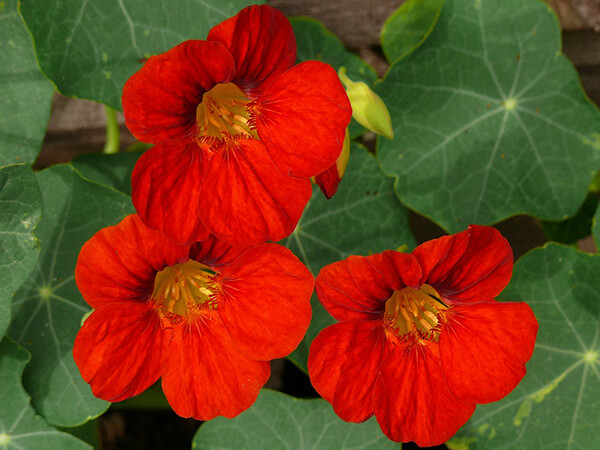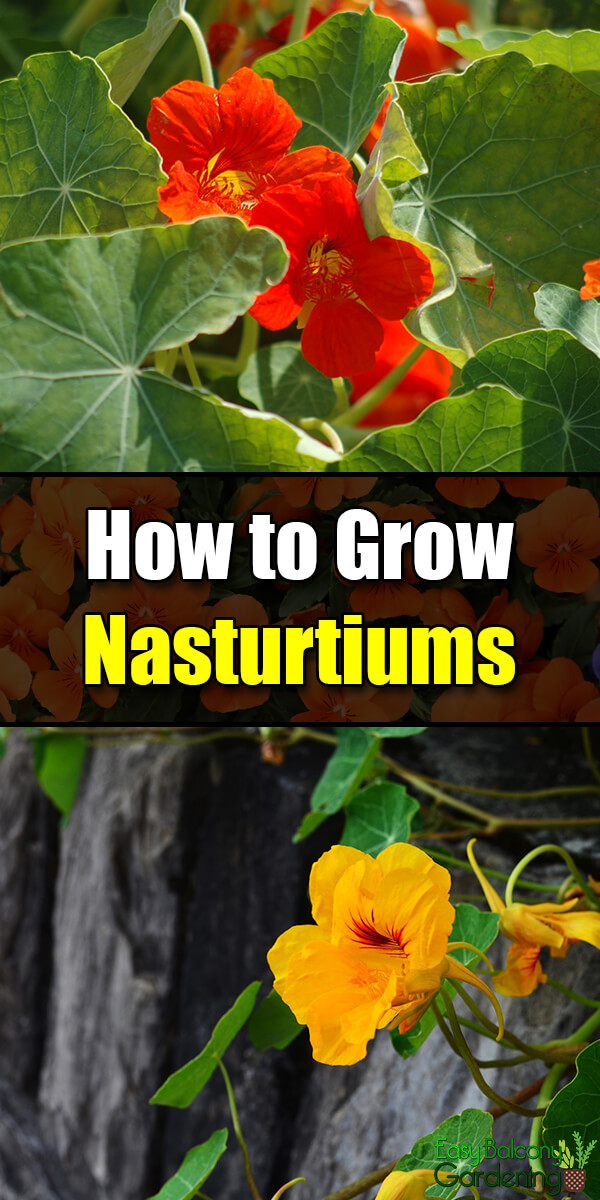Nasturtiums, considered as an annual plant, are decorative, colorful, and delicious! They are such a dream plant for experienced and beginning gardeners alike. Once the nasturtiums have become established plants, they are almost carefree!
As Kitchen Herb
The nasturtiums are edible. They can be used as garnish, chopped or whole, and have a tangy, sweet taste. They can be utilized for creamy soups, cakes, pickles, vinaigrettes, hors d’oeuvres, etc. For chicken or egg salads, use both blossoms and leaves. Using your artistry and imagination, you can also turn them into beautiful gifts for a relative’s or a friend’s kitchen table. Although the nasturtiums prefer full sun, remember that the peppery taste is dictated by how much sun they get. So if you want a milder taste, grow them in partial shade. With more shade than sun, you also will have more foliage than blooms.
Medicinal Properties
The nasturtiums reportedly have medicinal properties that can help treat infections, intestinal parasites, colds, flu, and aid in boosting the immune system. Although this is a glowing report, you should be careful in using any herb for medicine, especially if you are on prescription medication. Be extra careful if you are a pregnant or lactating woman. It is prudent to involve a medical doctor when using herbs as medication.
Planting the Nasturtiums
You can find several ways of planting the nasturtiums as part of your garden. Remember to regularly prune them, or they will crowd out your other plants. You can plant the nasturtiums in hanging baskets, window boxes, planters, etc. You can choose from the compact, the climber, and the trailing varieties. The compact ones are bushy and colorful. They make great edges and borders. They grow to about one foot tall and about a foot-and-one-half wide. The climbers can grow up to ten feet, and the trailing types up to four feet.
Propagation
The nasturtiums are normally propagated from seeds. They germinate quickly. For faster sprouting, soak the seeds in warm water overnight, and directly sow in the garden or pots. They do not like to be transplanted. Ease some of the shock by starting them indoors in peat containers about four weeks before the last frost, or you can sow them directly in the garden after the last frost when the soil is warm.
Cultivation
The nasturtiums like full sun and well-drained, moist soil. Wait to plant in the spring after the last threat of frost. Plant the seeds about one inch deep and about 12 – 15 inches apart. For climbing varieties, you will need a trellis or some other type of support. Irrigate right after planting and once weekly thereafter. Dryness can cause them to have diminished blooms and ratty foliage. During the growing period, do not fertilize the plant unless you want more foliage and less blooms. The nasturtiums will bloom from early summer through fall if you live in cooler locations. If your winters are mild, they will blooms from fall through spring. If you want longer periods of blooms, keep up on picking the flowers. Established nasturtiums are nearly care-free and will give you blossoms until the first frost.
Pests and Diseases
Aphids like nasturtiums. Watch out for them. If you see even one, take immediate action. Aphids are easier to control while the population is low. Nasturtiums are also prone to slugs, caterpillars, and flea beetles. Treat organically, especially if you intend to eat your nasturtiums.








